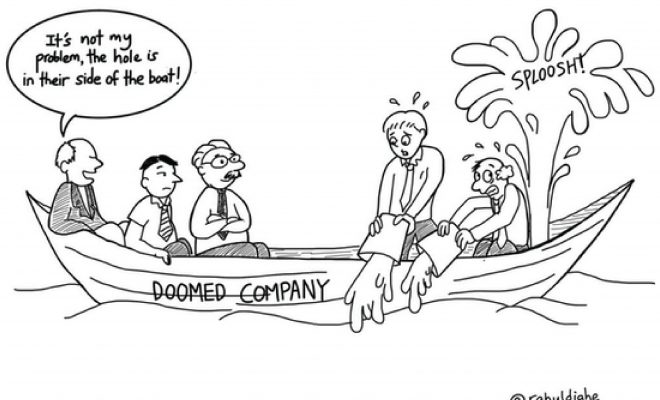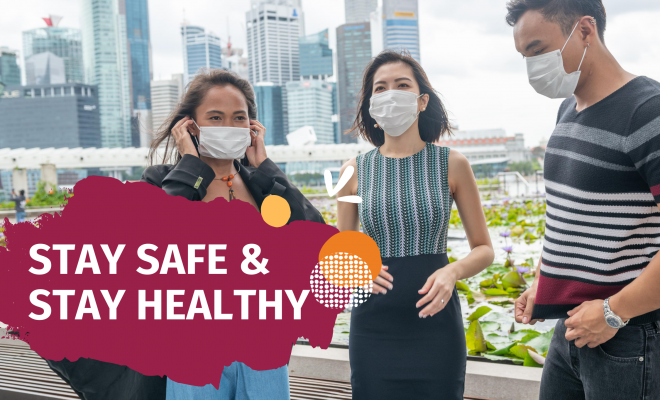Not My Problem

How often have you heard in a conversation where someone apathetically says, It’s not my problem” or “that is not my job”. They may have been referring to a co-worker not following the rules, a contractor doing a task incorrectly, or a hazard left by someone in the work area.
Likewise, how often have we seen a potential hazard at the workplace, an unsafe act of a co-worker ignored, thinking that the custodial staff will take care of it?
Regardless of the basic issues, if a co-worker is not following safety rules or a hazard created by a contractor, it will certainly affect you if an incident occurs at the workplace. The implication of the injuries will have a rippling effect on the employees at the workplace, jobsite, the company as a whole and employee’s family as well.
The increasing number of injuries within the company will affect the renewal of insurance premiums as well as a company’s ability to bid for work, especially if the tender is from government bodies. Companies with poor safety performance will inevitably affect the morale of the workers, lose its competitiveness, and result in paying hefty fines for workplace safety violations and placed under “surveillance scheme” by the authorities.
If the company is not able to acquire new businesses or even lose existing jobs due to incidents and injuries, this would affect the employability of workers. Immediate effects of an injury may include loss of work hours or shutdown of the workplace. Many companies usually stop work to complete an investigation, even for minor incidents. If there is a fatality at the workplace, it will take days to complete a thorough investigation together with the respective authority. For serious incidents, such as an outbreak of fire in a factory, work could be stopped for months following investigations.
Fix the System Not the Worker
Incident investigations sometimes follow the “train, discipline, and terminate” or “fix the worker model. The problem with this model is that the analysis is incomplete and root causes are not identified and the incident inappropriately investigated and unresolved. In such cases, the supervisor may be terminated, and several employees disciplined and the team re-trained.
Authorities focus on human error so that they can determine the negligence. Under common law for claim settlements, legal authorities seek to apportion the blame in order to allocate settlements accordingly.
Unfortunately, there is a tendency for investigators or safety personnel to be fixated on the blame game, attributing the cause of accident as “carelessness” of the worker or human error. They may take sides in arguing the case for the employer and apportioning blame on the injured employee, throwing human decency out of the door.
The term human error often misdirects effort in safety. A major objection to the human error concept is that there is usually a focus on the “errors” of the individual and does not take into consideration the contribution of others who had developed and managed the overall system.
Unless we eliminate the fundamental flaws and operational risks within the systems, interventions that focus on changing the way work is done or by removing a worker will not solve the problem.
Management must be perceptive in ascertaining potential situations that may cause confusion or is open to misinterpretation. Clear communication of objectives also plays a major role in avoiding unnecessary confusion.
The organisational metrics, how people are measured and rewarded, the culture of the organisation, and the work climate may also lead the worker to think that unsafe behaviour is acceptable. Management must demonstrate leadership and walk the talk. Excess pressure to achieve goals or to meet the scheduled deadlines increases stress and may lead to errors resulting in inferior work quality or worker injuries.
Culture
Management defines the values and creates the culture of the organisation. What is the climate in your company that determines what is deemed acceptable or not? Examine the people in the organisation and the systems that are devised to drive it. How much emphasis is placed on leadership? Is safety an intrinsic part of everything that is planned and done? Are people put into situations where they have to compromise between production goals and safe work practices?
Almost all workplace accidents are a result of an unsafe act, and behind every unsafe act, there is a reason that caused the worker to make a decision that resulted in the unsafe behaviour. But why did the worker make that decision?
Even with rules and norms, the culture of the company / organisation drives safety. Safety rules seldom cover every situation or hazard, therefore it is important that everyone becomes aware and empowered to report near misses e.g. a spill on the floor. Are the employees empowered to take action to make sure no one slips and falls? Does the culture make this acceptable and is it encouraged?
A careful root cause analysis will reveal if there is a management policy or “unwritten” practice that leads the worker to perceive he or she is making a choice that management wants or expects. The worker’s decision to take short cuts and bypass the safe work practices derives from his or her perception that the task must be performed quickly in order to be deemed acceptable by the supervisor or peer. Of course, he or she may or may not be correct, but the perception becomes a reality that leads to a potential unexpected or unwanted outcome.
To be “successful,” in his role, workers have to function within the systems of the organisation. Their behaviours and the risks taken by them are a result of this symbiotic relationship, to structurally eliminate risks from the company’s systems. Management must ensure that all the systems are integrated and the practices are aligned with the business goals.
Safety is a Shared Responsibility
Companies that are best in class when it comes to workplace safety have one thing in common – ownership of workplace safety. Does everyone at the workplace take ownership of their own safety and others around them? Is safety ownership an intrinsic value in their workplace culture? How serious does the management view workplace safety? More importantly, is the culture one that values learning from mistakes (incidents) and shares that learning?
Ownership of workplace safety is important, it signifies a shared responsibility, for everyone to embrace the same mindset – that it is not just the employer’s or the safety personnel’s job. With ownership, individuals are more likely to speak up when they see safety issues, report near misses and hazards, intervene when unsafe behaviours are observed by their co-workers. This shared responsibility cultivates a positive and proactive attitude towards safety at the workplace encouraging workers to take safety initiatives seriously.
Article contributed by Jason Oh, Lecturer, School of Safety and Environmental Management













